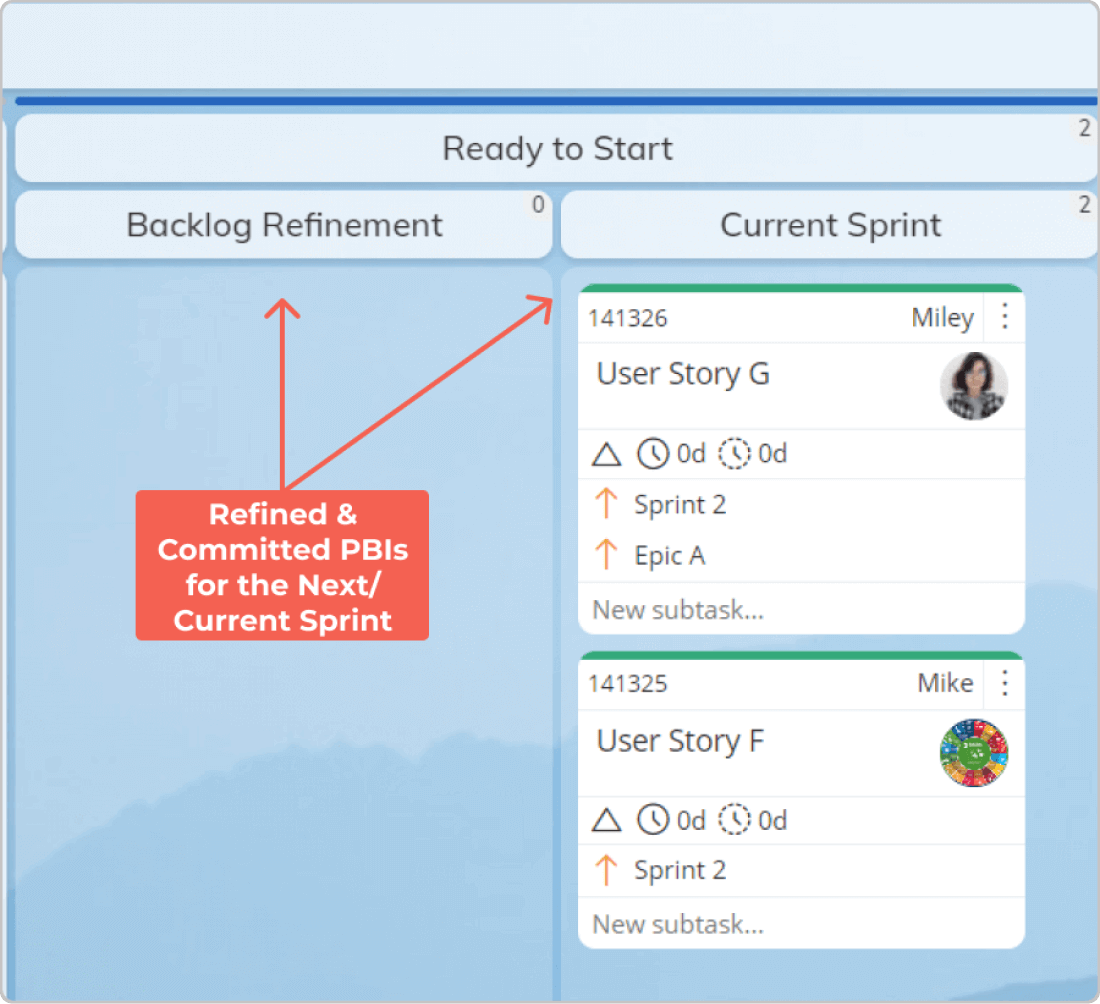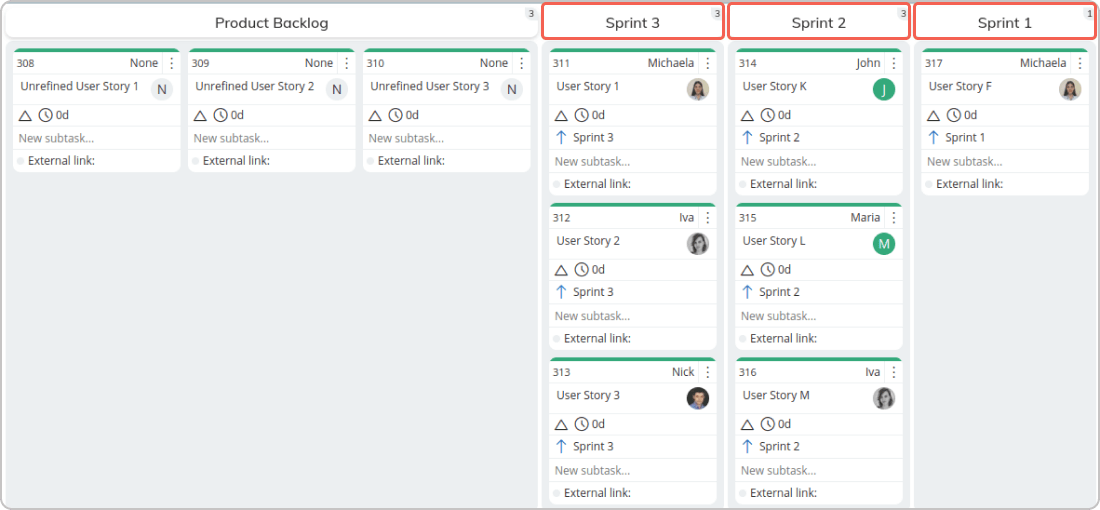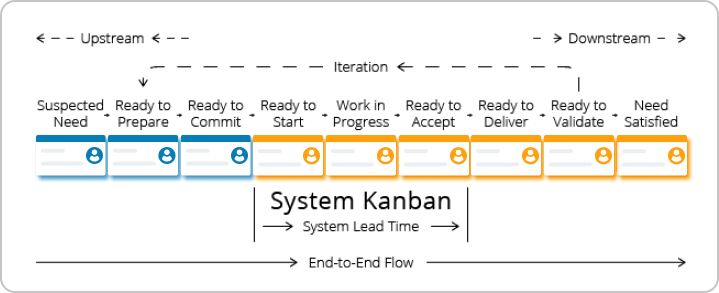Imagine concluding a sprint only to realize that the work completed doesn't quite sync with your product's long-term goals or that you've tackled tasks of lesser importance while more critical issues loom. Either way, these outcomes can lead to wasted time, effort, and resources, which is something every product owner wants to avoid.
But fear not, for there is a strategic safeguard against such inefficiency: backlog refinement. This process is your ticket to a well-organized product backlog, where tasks are not only relevant and clearly defined but are also estimated and prioritized to align perfectly with your upcoming sprint.
Keep reading to learn how to conduct a successful backlog refinement meeting, what activities are included, and explore best practices and tips. This will ensure that your next sprint is set up to succeed.
What Is Backlog Refinement?
Backlog refinement is an ongoing process commonly used in software development and in projects and products that use the Scrum framework to develop and manage them. It involves collaboration between the product owner and the development team to ensure that all team members understand the essence of the product backlog items (PBIs). The selected items have estimates and are ordered by priority in terms of business value and required effort. The product backlog contains features, enhancements, and tasks that represent the work to be done on a project during the upcoming sprint.

Backlog Refinement vs. Backlog Grooming: Is There a Difference?
"Backlog refinement" and "backlog grooming" are terms often used interchangeably in Agile contexts. They refer to the process of reviewing, prioritizing, and refining items in the product backlog.
In the past, backlog refinement was also called backlog grooming, but these days, almost no one uses the term "grooming" as it has become a word with a negative connotation.
Ultimately, whether you refer to it as backlog refinement or backlog grooming, the objective remains the same: to ensure that the product backlog is continuously updated, prioritized, and refined to support the delivery of value to customers in an Agile manner.
Backlog Refinement vs. Sprint Planning: Not the Same Thing
Even though backlog refinement and sprint planning serve specific purposes and occur at different stages in the project lifecycle, it is best when they work together.
Backlog refinement is separate from specific sprint boundaries and may occur as often as necessary to ensure the backlog remains up-to-date and ready for planning.
Sprint planning, a pivotal moment at the start of each sprint, shapes the work to be done during the sprint. It involves selecting backlog items from the refined product backlog, breaking them down into smaller tasks, estimating effort, and creating a sprint backlog that outlines the work to be done.
What Is the Purpose of Backlog Refinement?
The purpose of backlog refinement is to ensure that the product backlog is continuously updated, prioritized, and prepared with relevant and detailed work items. The items must include estimations appropriate to their priority for the upcoming sprint. By regularly reviewing and refining the backlog, the team gains a better understanding of what the product will and won't do.
Backlog refinement allows the team to prioritize the backlog items based on their importance and value to the project. Prioritization ensures that the most valuable features or tasks are addressed first, maximizing the value delivered to the customer. It also provides an opportunity for the team to adapt to new insights, changes in requirements, or shifts in priorities. This flexibility allows the team to adjust the backlog accordingly to meet evolving needs.

What Are the Benefits of Backlog Refinement?
The benefits of conducting backlog refinement are listed below.
- Backlog refinement improves the sprint planning meeting's efficiency because most questions have already been answered.
It exposes hidden complexity. - It keeps the product backlog focused, relevant, and clean, so you feel free from drowning in a growing tasks list.
- It creates a shared understanding of tasks and achieves greater alignment in the work.
- It harnesses the advantages of collaborative efforts in elaborating Agile user stories and identifying defects.
- It reveals dependencies.
- It enhances collaboration and alignment among team members, product owners, and stakeholders.
How to Perform a Backlog Refinement in 5 Steps?
Performing product backlog refinement helps your team get the product backlog ready for the next sprint. You can successfully conduct backlog refinement in five steps.
Step 1. Analyze the Data. Product backlog refinement starts by analyzing the data and feedback collected from target users and customers. It's important to focus on the data that is relevant to understand if you are building the right features with the right technology and UX. This is the step, where based on the feedback, you have to decide if you are improving and enhancing the product your team is building.
Step 2. Incorporate the Findings. Once you have analyzed the feedback and the data, you have to incorporate the findings into the product backlog.
Step 3. Decide what's Next. In this step, you have to decide what to do next and define the goal for the next sprint. You have to be clear with the purpose of the next sprint and what has to be prioritized to achieve that purpose.
Step 4. Refine the Backlog Tasks. In this step, you have to break larger items into smaller ones. For example, break Agile epics into user stories. Further, prioritize and reorder the tasks according to their significance for hitting the sprint goal.
Step 5. Prepare the High-Priority Items. Before starting the next sprint, make sure that the stories are clear, testable, and feasible. If necessary, resolve dependencies between teams working on the same project. After completing the final step, you can start pulling tasks onto the sprint backlog or the kanban board.
What Are the Best Practices and Tips for Backlog Refinement?
Some of the backlog refinement best practices and tips teams should follow are:
- Backlog refinement shouldn't consume more than 10% of the development team's capacity.
- User stories that no longer appear relevant should be descoped.
- Re-prioritize the stories for the next iteration.
- In light of newly discovered information, estimates should be corrected.
- If necessary, ask more experienced team members to provide estimates.
- Don't excessively detail backlog items.
- Avoid disagreements on estimates.
- Make the product backlog DEEP (D - detailed appropriately, E – estimate, E- emergent, P- prioritized). Use this acronym to keep your product backlog organized by outlining the most crucial product item attributes.
What Should Be Included in the Backlog Refinement Agenda?
While goals are nice to have, you need to carry out specific actions to achieve them. To evaluate whether a backlog needs refinement, you can use this checklist and regularly review it. If the answer to all the questions below is "no," then you can say that your backlog is refined.
- Does the backlog contain items that no longer make sense?
- Is there any user need that isn't yet in the appropriate form of a backlog item?
- Are there any items at the bottom of your backlog that your customers expect you to implement urgently?
- Since the last time you looked at your backlog, is there any item with changed delivery importance?
- Do all of the items on your backlog have agile estimates?
- Is there any item with an outdated estimate?
- Is there any item on your backlog that is too broad to understand the description so that your team should know what to implement in the next sprint?
When Is the Best Time for Backlog Refinement?
As backlog refinement is an ongoing activity, there is no such thing as the best time for backlog refinement. Some Product Owners report that they prefer to do it three to five days before the end of a sprint, and some prefer to do shorter meetings every week. After all, there is no one-size-fits-all method for conducting a backlog refinement. You can refine items in the backlog at any time, in or outside a meeting.
What Are the Activities in Backlog Refinement?
Backlog refinement is about creating an understanding among the entire team of what the Product will do, what it won't do, and what it takes to create it.
The activities in backlog refinement are listed below.
- Product discovery.
- Removing items that are no longer relevant.
- Preventing misunderstanding by adding details to the items and improving clarity.
- Splitting large items into smaller ones, as smaller tasks are easier to work on and finish fast.
- Sizing items and resizing items.
- Prioritizing and re-prioritizing items.
- Identifying obstacles and risks for items close to implementation.
How Long Should Backlog Refinement Take?
There is no guideline on how much time a backlog refinement should take. The only thing that is specified is that it shouldn't take more than 10% of the development team's capacity.
What Are Backlog Refinement Meetings?
The backlog refinement meeting is held at the end of each sprint to make sure that the backlog is ready for the next sprint. The product backlog refinement aims to keep the backlog orderly and clean. During a backlog refinement meeting, the Product Owner and the team discuss the top tasks on the product backlog. This is the team's chance to ask the most important questions that arise during sprint planning. The Product Owner doesn't necessarily need to fully resolve all the questions during a backlog refinement meeting. The backlog refinement meeting is a checkpoint rather than an effort to resolve issues fully.
When Is the Best Time for a Backlog Refinement Meeting?
There is no best time for a backlog refinement meeting, as backlog refinement should be considered an ongoing activity. Some teams prefer a backlog refinement meeting a few days before the end of a sprint, others at the beginning of a new sprint, and a third group prefers to hold them mid-iteration and alternate the sprint planning meetings with the backlog refinement meetings.
Who Attends a Backlog Refinement Meeting?
The Product Owner always attends backlog refinement meetings. The rest of the attendees depend on items that are up for refinement.
Potential attendees of backlog refinement are
- The development team.
- Member of the QA team, if you have such a team.
- Representatives from Customer Support or Customer Success.
- Other stakeholders related to the product.
- Scrum Master.
Who Facilitates Backlog Refinement Meetings?
Usually, the Product Owner facilitates the backlog refinement meetings. However, since the Product Owner has a high stake in the outcome and direction of the discussion, it is better if the Scrum Master facilitates these meetings. The Scrum Master is accountable for establishing Scrum by helping everyone understand Scrum theory and practice, both within the Scrum Team and the organization. As such, the Scrum Master has no official role in the meeting and can be more objective.
What Is the Relationship between Backlog Refinement and Scrum?
Scrum is a highly prescriptive framework compared to Kanban. Scrum requires detailed and restrictive planning and has predefined processes and roles. The Scrum framework is based on three pillars - transparency, inspection, and adaptation. In Scrum, the work is divided into smaller tasks that must be completed in a predefined period of time (sprint). Adding new items during a sprint is strongly discouraged, which delays new work and reduces team flexibility.
Backlog Refinement is a part of the Scrum framework and ensures that items on the Product Backlog are understood the same way by all team members, items have estimates, and they are ordered by priority in terms of business value and required effort.
How to Refine Backlog Ideas in Kanban?
In Kanban, there is an Upstream (Discovery) and Downstream (Delivery) process. The backlog represents the initial phase of the Discovery process. The objective of Upstream Kanban is to create a consistent stream of ideas, refine them, and identify the work items that deliver the most value to the customer.

Once teams evaluate product or service development options, they can either discard an idea or move it to Delivery Kanban, where actual work occurs. The Discovery process offers the advantage of reducing the likelihood of work abandonment, thereby minimizing waste once a commitment to deliver to end customers has been made.

Mila Chervenkova
Marketing Expert | Agile, Kanban & OKR Practitioner
Mila is a seasoned marketing professional with a rich background in product marketing, content creation, and website optimization. Years of Practicing Kanban, Agile, and OKR practices have made her an expert in creating powerful productivity habits.



